Hello Hive community!
In this post I'd like to share with you my second visit to the National Music Museum, located in the heart of the historic Place El-Hedim in Meknes. It's a magnificent cultural venue that combines Moroccan heritage and traditional music, all in an enchanting setting.
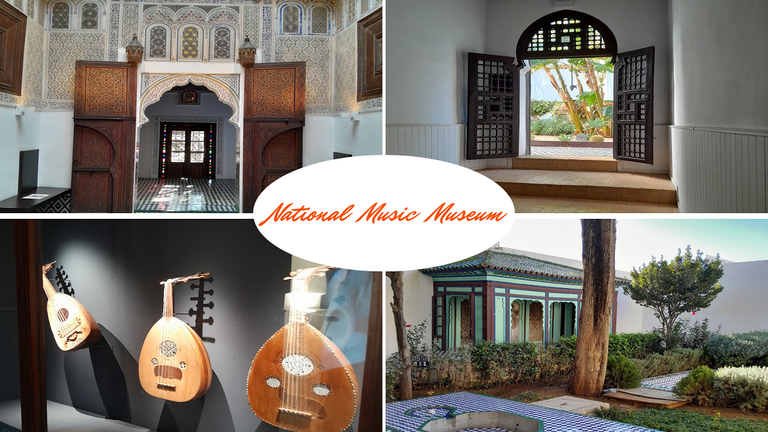
The reason I came a second time was simply because my first visit left a strong impression on me, but this time it was even better, and what's really impressive is that I've been living in Meknes for a long time and I didn't know that this museum existed in this city, knowing that I'm really a fan of everything to do with culture, history and music...
As soon as I walked through the entrance, I was transported by the soundscape. A gentle background of Berber music (the Berbers, also known as Amazigh, are the country's original inhabitants who have preserved their culture, traditions and language to this day! NB: I am of Berber origin). This Berber music with the birdsong from the inner garden creates a perfect harmony to awaken all the senses.
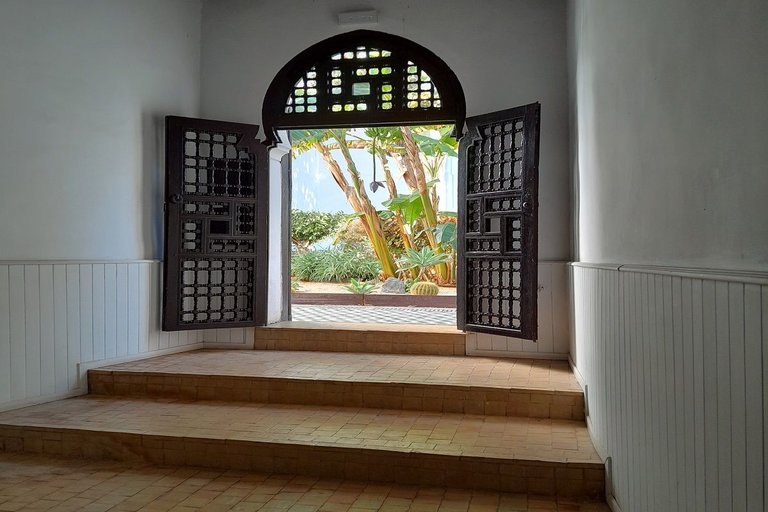
This museum, also known as ‘Dar Jamaï’, offers an exhibition of different Moroccan musical styles. I loved losing myself between the displays of traditional instruments: finely decorated ouds, drums, and even instruments I'd never heard of before. What I found fascinating was the opportunity to listen to sound extracts using interactive terminals.
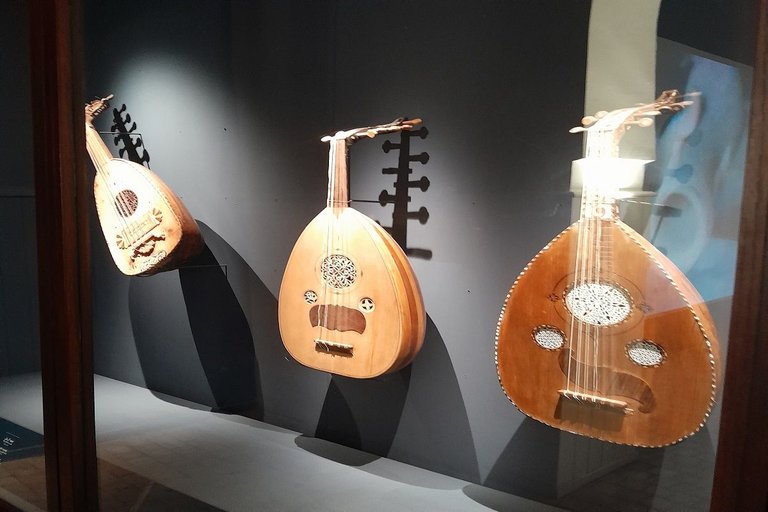
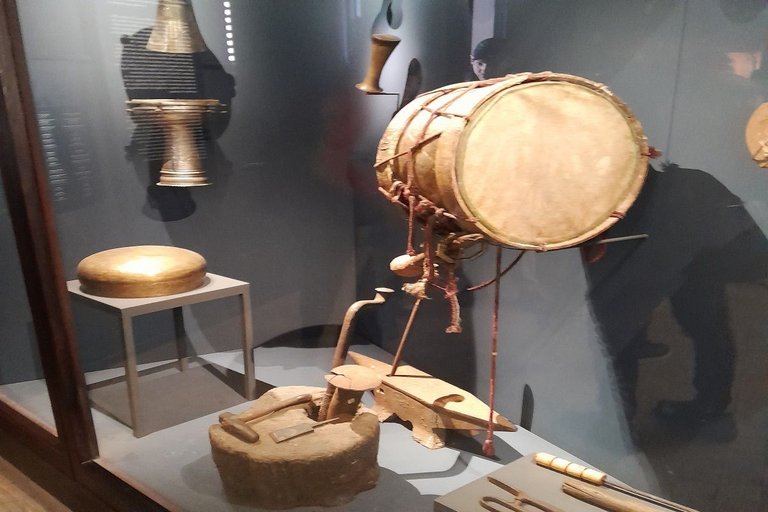
The making of musical instruments is a fascinating tradition that dates back to ancient times. Back then, simple everyday materials such as bones or logs were transformed into whistles or drums. With a little creativity, almost anything could become an instrument in the hands of a musician!
However, certain crafts, such as making wooden instruments like the lute, are gradually disappearing in some countries. It's a sad state of affairs when you consider that instruments like the oud have been around for over 5,000 years! Of course, its original form was quite different, with a single strand instead of today's multiple strings.
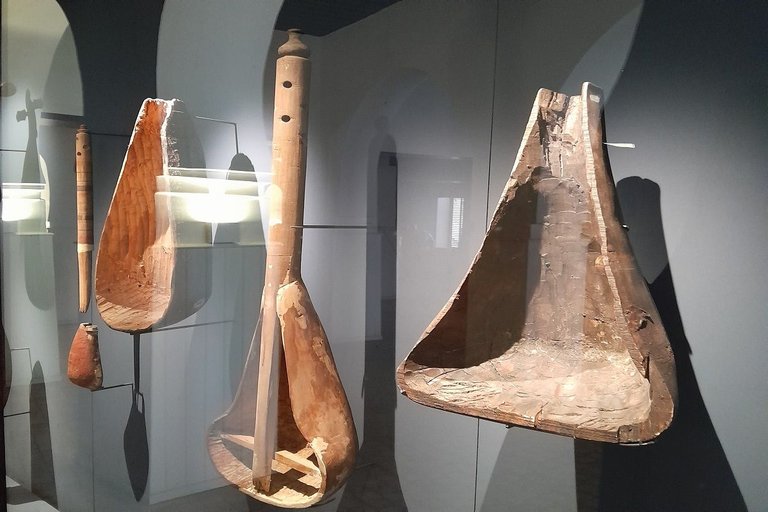
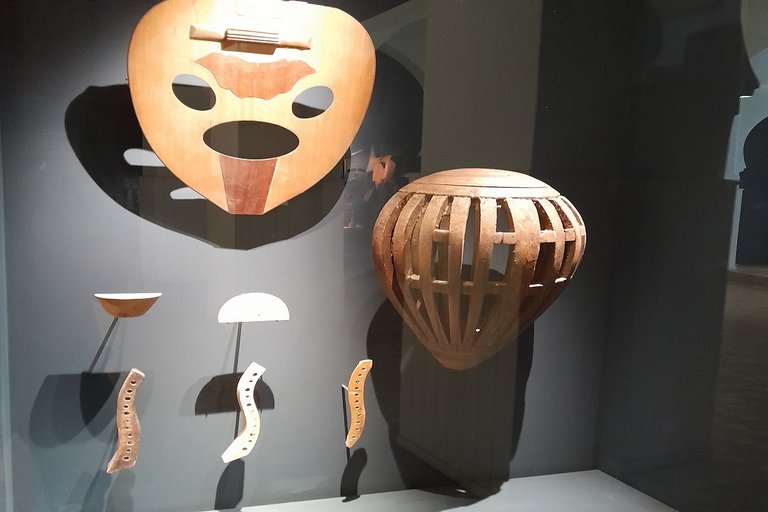
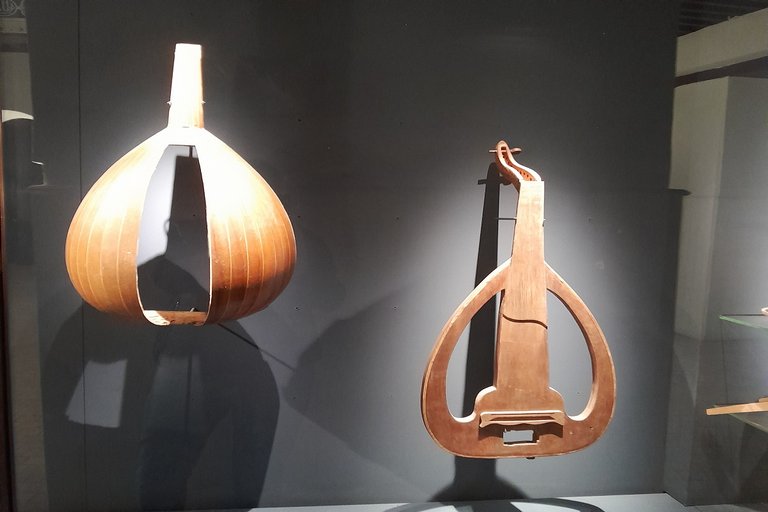
Percussion instruments are the largest family of musical instruments! They include instruments that can be struck, shaken, scraped or clattered to produce sound. And their diversity is incredible: low, high or neutral tones, varied timbres and sometimes even melodies!
These instruments fall into three main categories, depending on the material they are made of: skins (like drums), wood and metal.
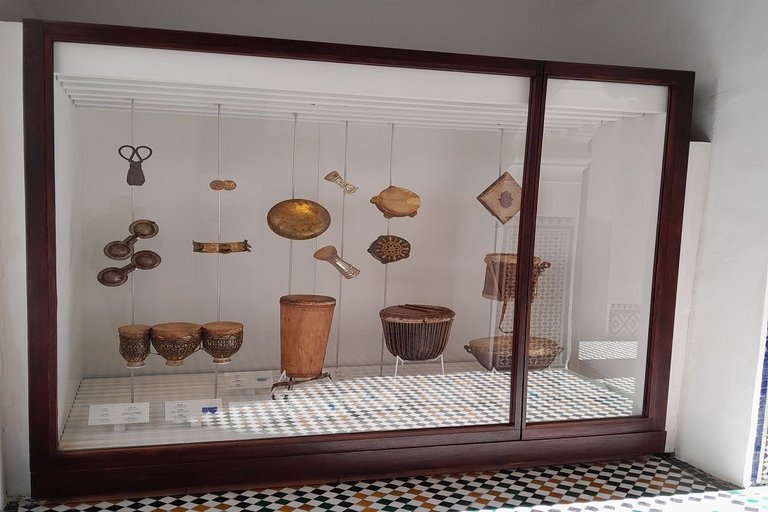
Another thing that stood out for me were the numerous videos projected on the walls. These short clips explain the origins of different Moroccan musical genres!
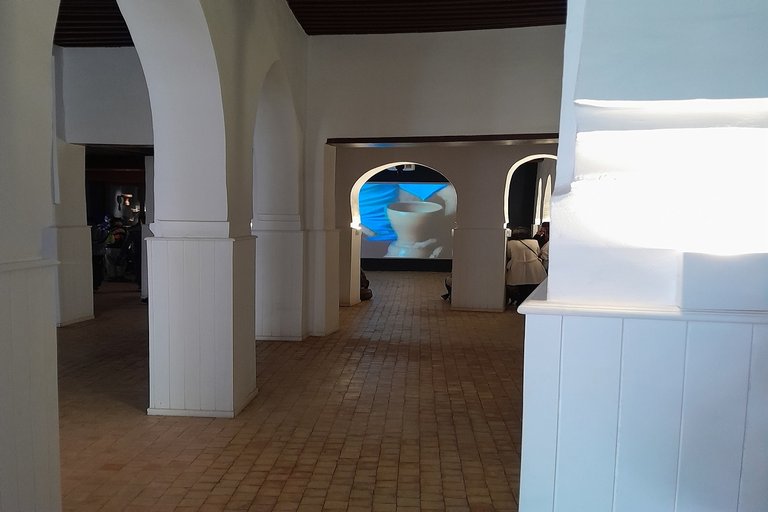
The building that now houses the museum has a fascinating history. In the 19th century, it was not a museum, but a residence belonging to a very famous and wealthy family from Meknes. Today, the building has been carefully restored to become a showcase for traditional Moroccan architecture. As I walk around, first on the ground floor and then upstairs, I can imagine the lives of the people who once lived here. What might their days have been like? In any case, I let my imagination take me back in time, dreaming of reliving those bygone days.
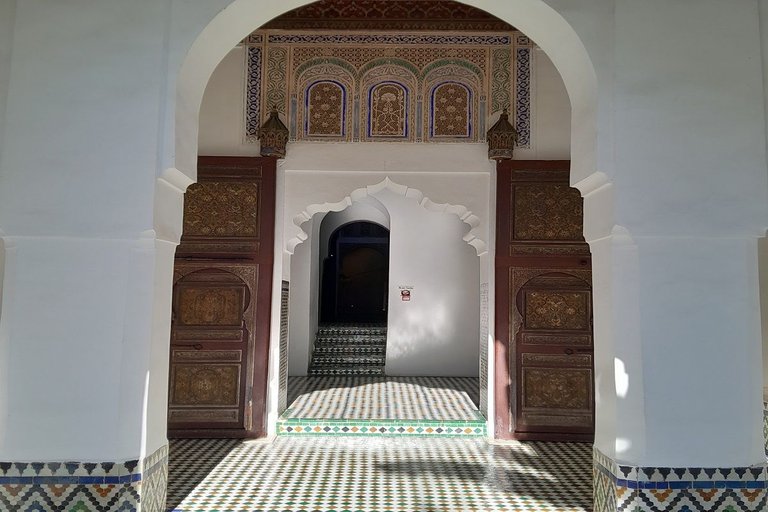
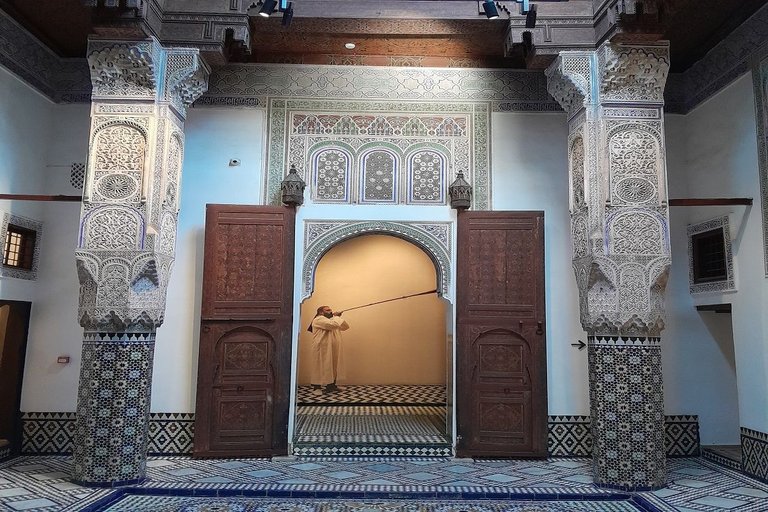
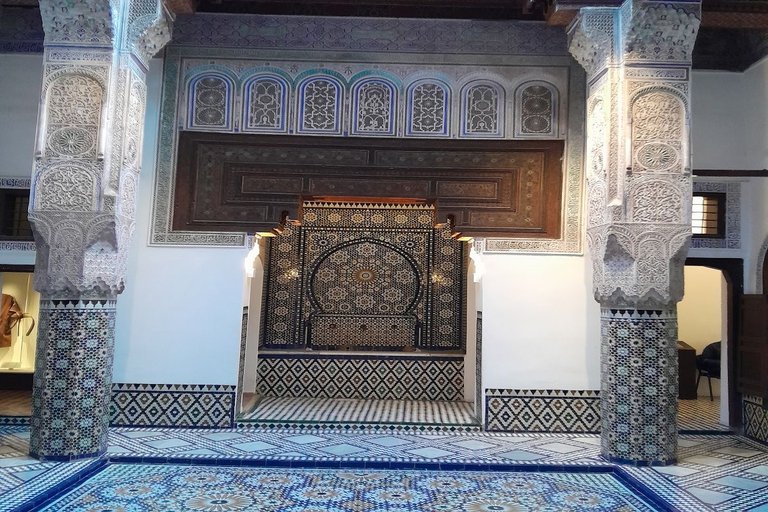
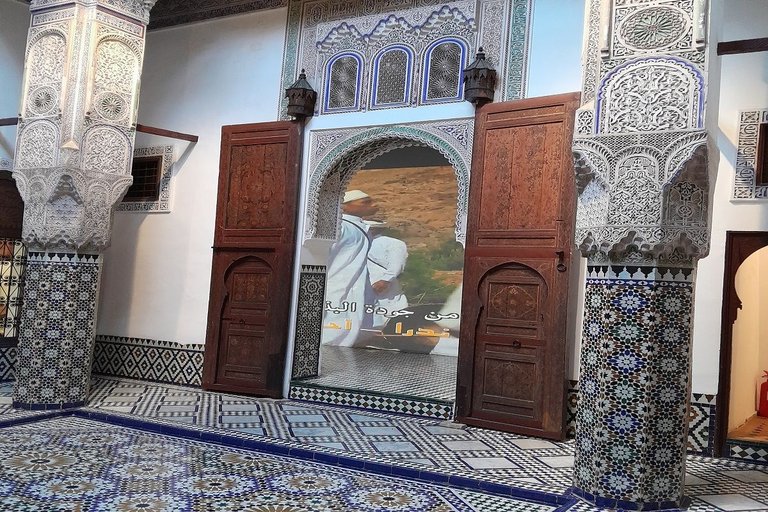
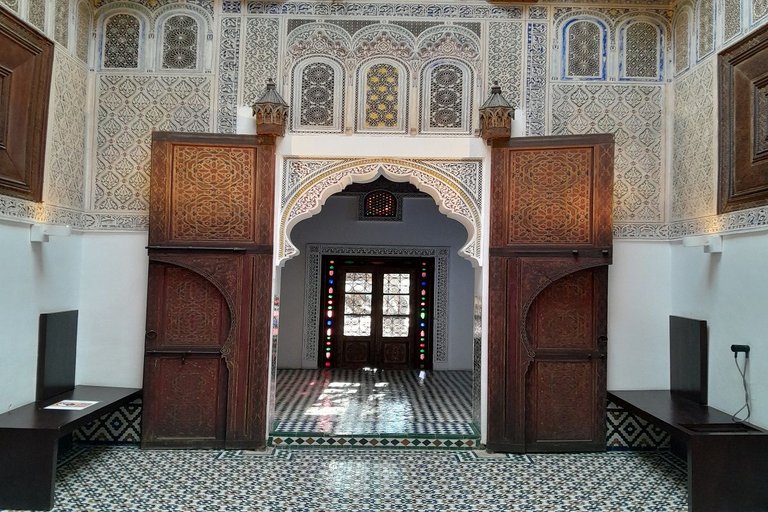
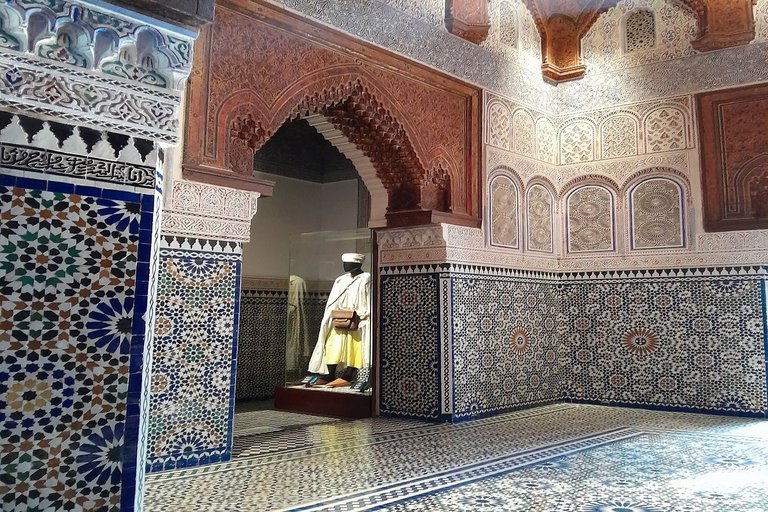
Below, I'm going to tell you about a few styles of Moroccan music, from the different regions of the country. I'll also show you an example of the instruments used for each style, all on display in this incredible museum!
Lhayt is an ancestral popular music that is part of the heritage of the tribes of the province of Taza (a small town north of Fes). This music is accompanied by traditional instruments. The associated dance, called ‘Daqqa’ (the strike), is performed in three stages: a slow rhythm, ‘Al'ayt’, followed by a square, sustained rhythm, and finally a fast phase, ‘Afous’, which combines energy and the vibrant sound of the ‘Naffar’ (traditional trumpet).
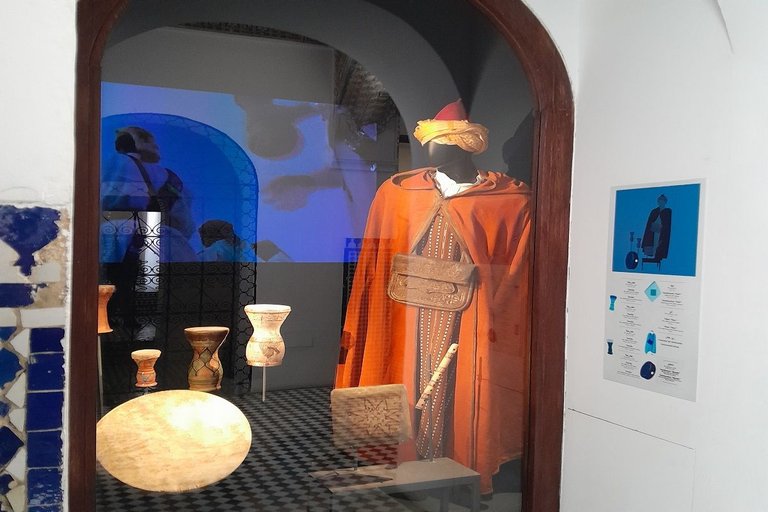
Hassanie music is a veritable cultural mosaic, covering a vast region from the Moroccan Sahara to Mauritania, and even as far as Niger and Senegal. This unique musical style is a fusion of Amazigh and Mauritanian rhythmic and modal traditions, blending Arab and African influences.
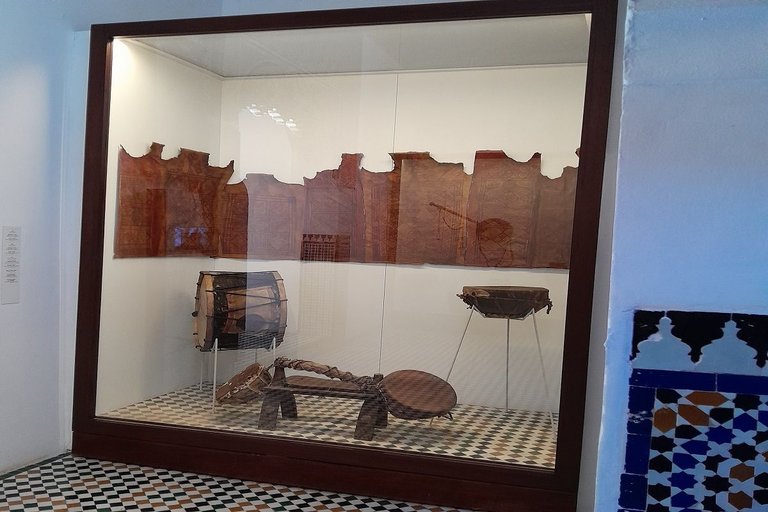
Reggada is a traditional Moroccan dance from the Berkane region, in eastern Morocco near Algeria. It was originally inspired by the war dances of the combatants. The dancers, dressed in Abaya and equipped with rifles and powder horns, make shoulder movements and strike the ground with their feet, all to the intense rhythm of percussion. The instruments used in this dance are the Galal, the Tamja (flute), the Ghaita and the Zamar.
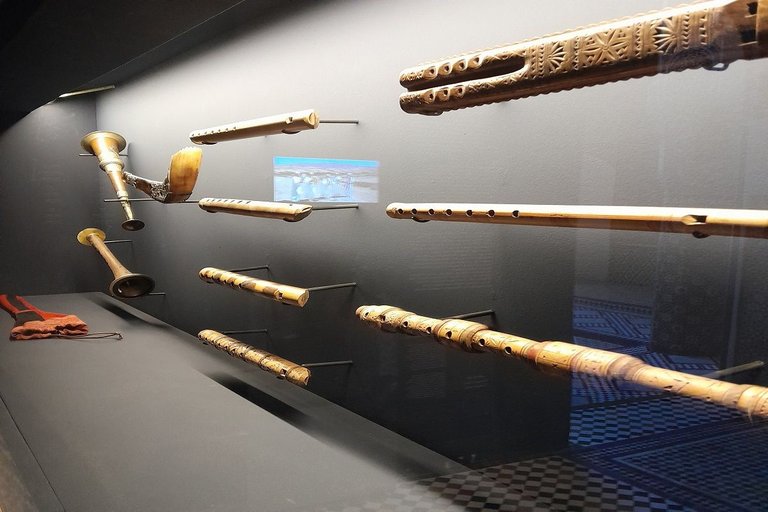
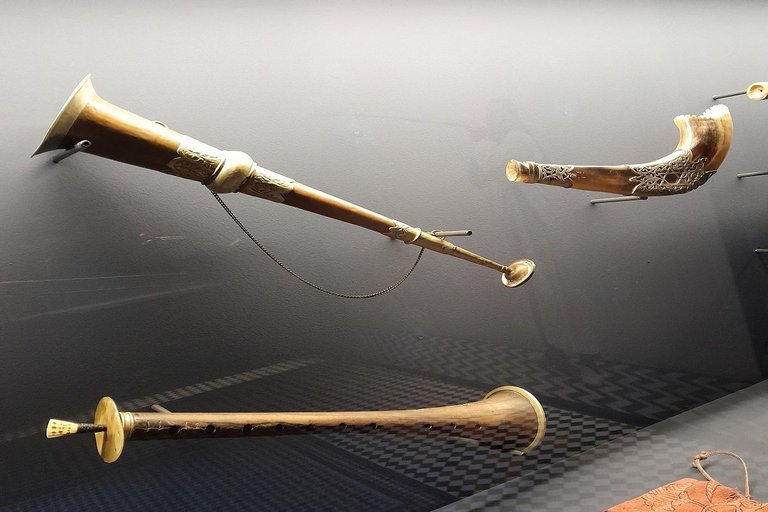
The Aissaouas are followers of a religious brotherhood founded in Meknes by Sidi Mohammed ben Aïssa, nicknamed ‘Cheikh El Kamel’. Every year, his tomb becomes a place of pilgrimage for thousands of followers. Their rituals, combining song and symbolic dance, often plunge participants into a state of trance. These ceremonies take place in private during ‘Lila’ (spiritual evenings) or in public during religious festivities.
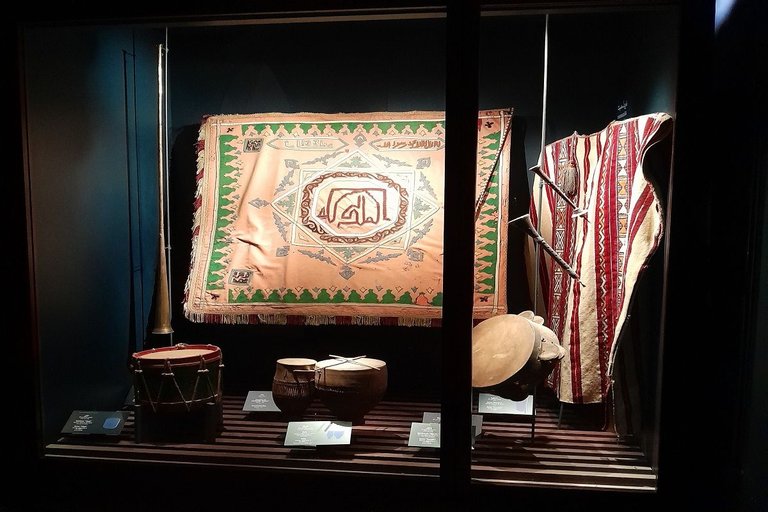
Gnaoua, a listed intangible cultural heritage site, is a unique style with deep roots in West Africa. The Gnaouas, descendants of slaves, organised themselves into Muslim brotherhoods where trance plays a central role. They arrived in Morocco during the Almohad period (11th century) and settled in Meknes in the 17th century under the reign of Moulay Ismail.
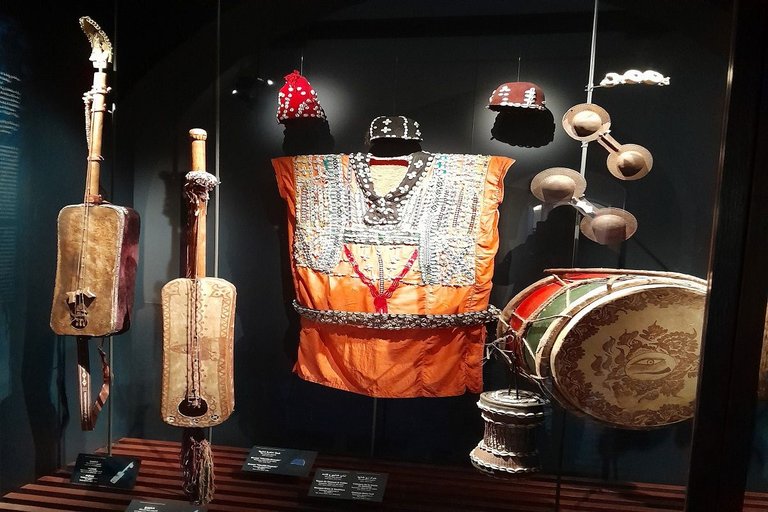
Their songs, often of mystical inspiration, are expressed during the ‘Lila’, cathartic ceremonies where the whole body and mind are mobilised. The spellbinding rhythm of the Guembri, castanets, Hajhouj, drums, clapping and body dancing is accompanied by incense and colourful clothing, creating a hypnotic and spiritual atmosphere.
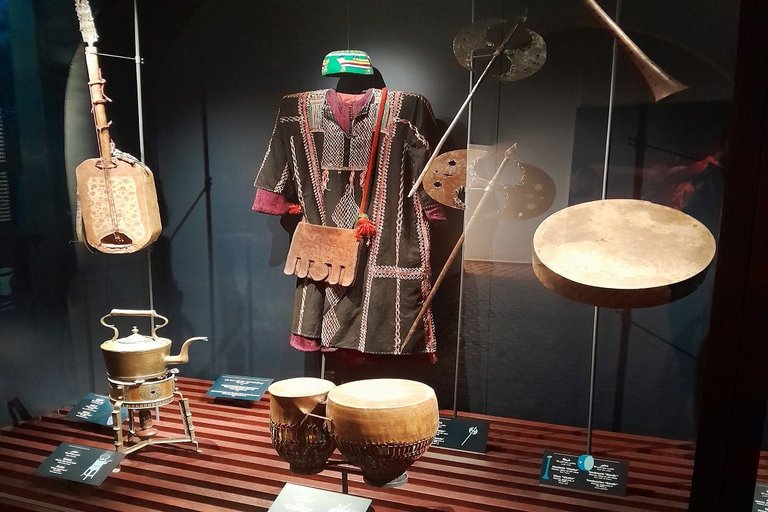
Among the Amazigh of the Atlas, collective dance is an essential tradition. It is called Ahidus in the north-east (Middle Atlas and part of the High Atlas) and Ahwach in the south-west (High Atlas and Anti-Atlas). These dances bring together men and women, guided by the Rwayes and Raysat (chiefs).
What makes these dances so unique is their collective aspect and the intense moment when the dancers' shoulders shake to the rhythm of the music. The lead singer is often accompanied by a Rebab, a single-stringed hurdy-gurdy, while the other musicians play the Lutar and the Bendir. A true cultural heritage that celebrates the harmony between music, dance and community!
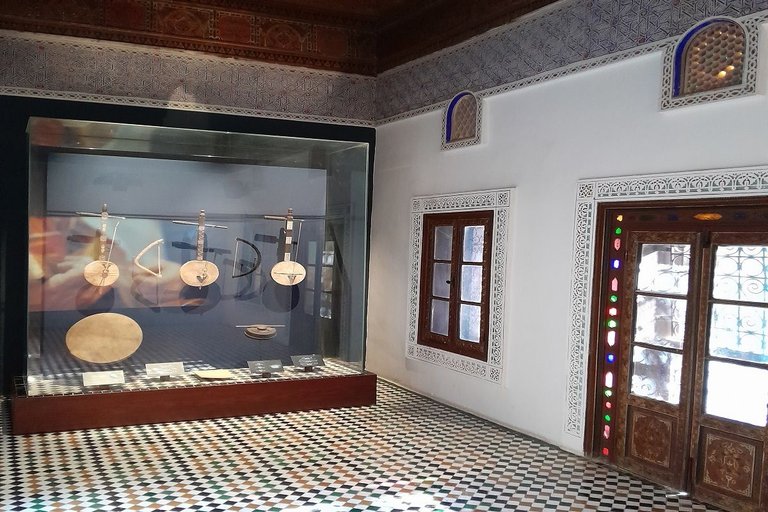
Jewish-Moroccan music is an integral part of Morocco's cultural identity, enriching the Kingdom's musical landscape with its diverse influences. Like the country's Muslims, the Jewish community has a great admiration for Andalusian and popular music (such as Chaâbi). The Piutim and Triq, descendants of the Judeo-Andalusians, play Andalusian music, a style that originated mainly in the Meknès Tafilalet region. Before their mass departure from Morocco, Judeo-Moroccan artists were also active in various musical genres such as Aïta, Gnaoui and Melhoun.
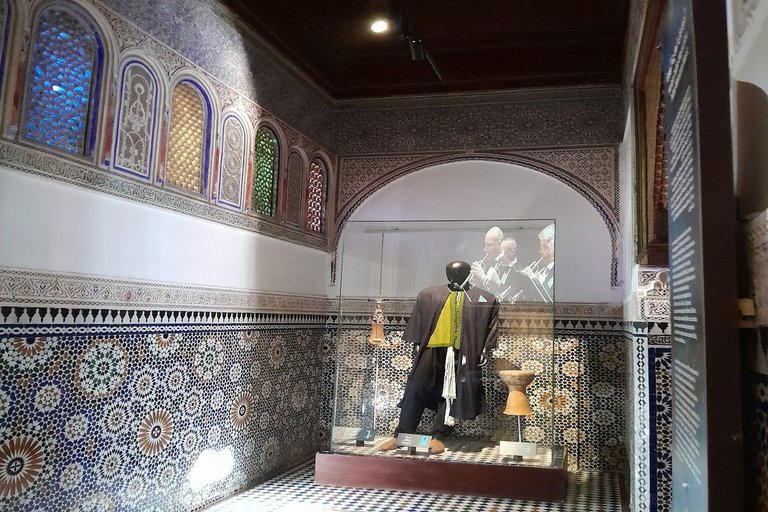
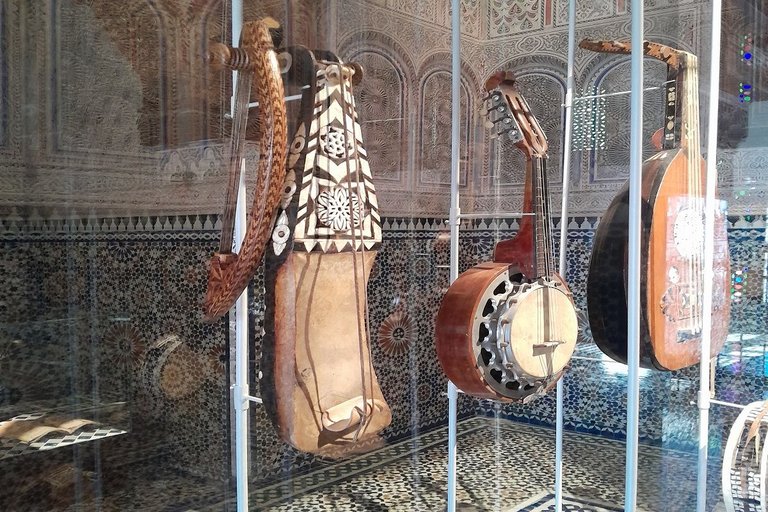
Andalusian music, or Al Ala, is a precious cultural heritage that was particularly well preserved in Morocco after the expulsion of the Moriscos in 1609. It was born from the fusion of Moroccan, Oriental and Andalusian musical styles, creating a classical music deeply influenced by religious poems.
Its repertoire, rich in eleven Nawbas, is played on emblematic instruments such as the oud and the Rebab. This musical genre is distinguished by its Ethos (Tabaa) and its complex score (Samaa). In Morocco, Andalusian music developed particularly in cities such as Tétouan, Chefchaouen, Fès and Meknès. It's a refined music, with a strong history and musical identity!
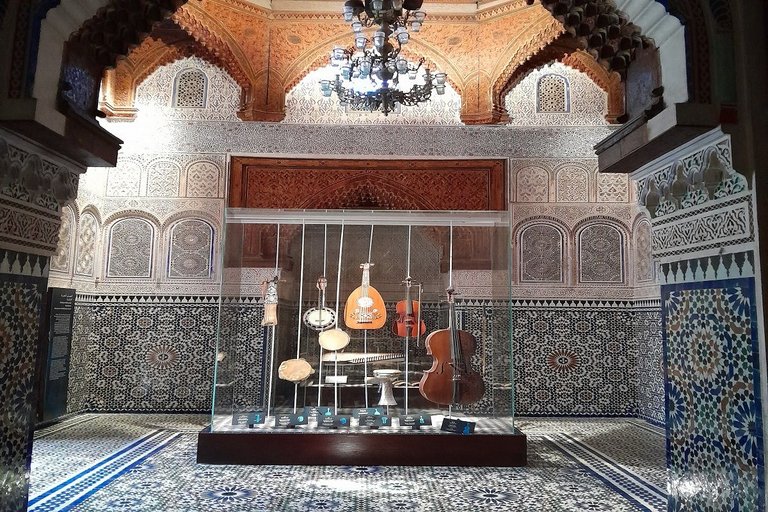
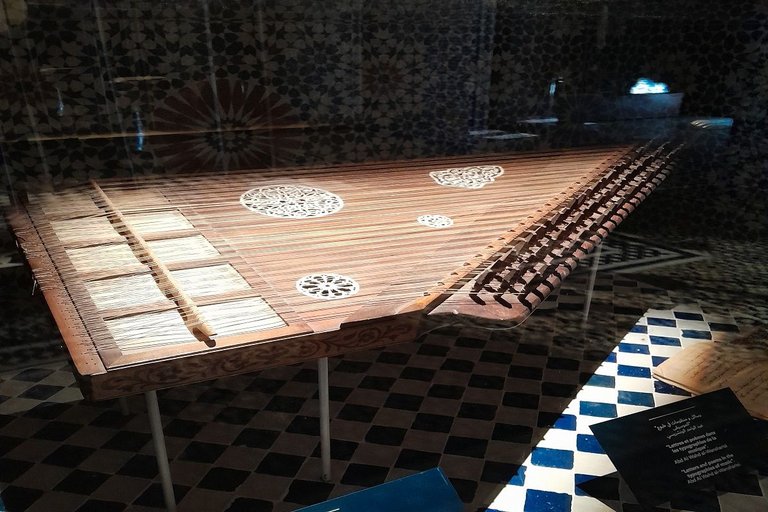
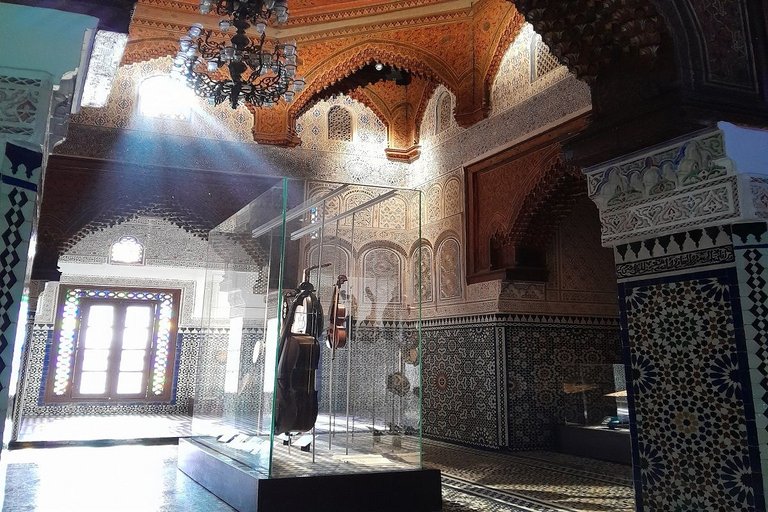
After spending about an hour and a half exploring the museum, I took a moment to sit in the interior garden.
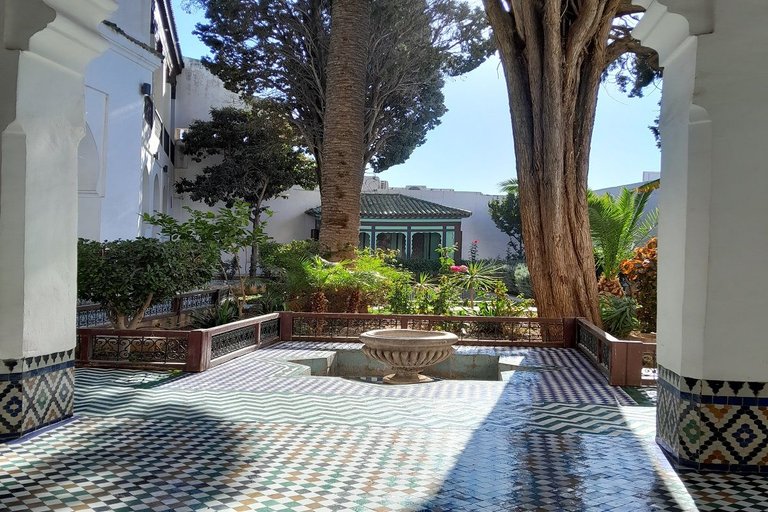

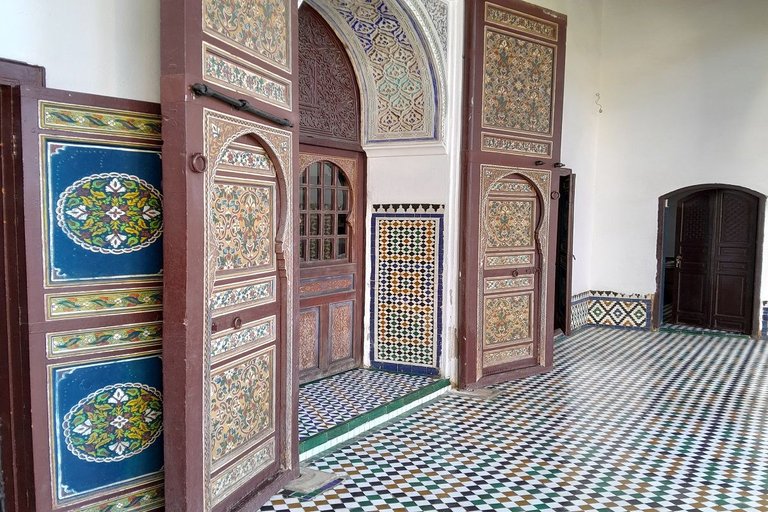
It's a peaceful space, with a beautiful fountain and lush green plants.
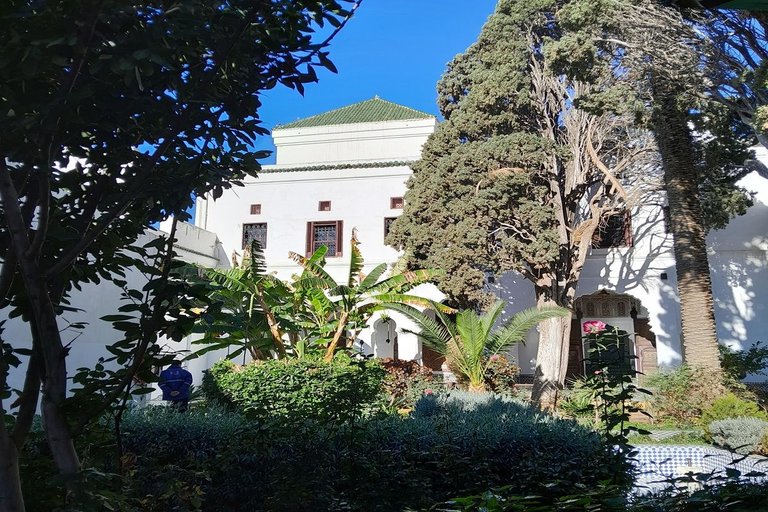
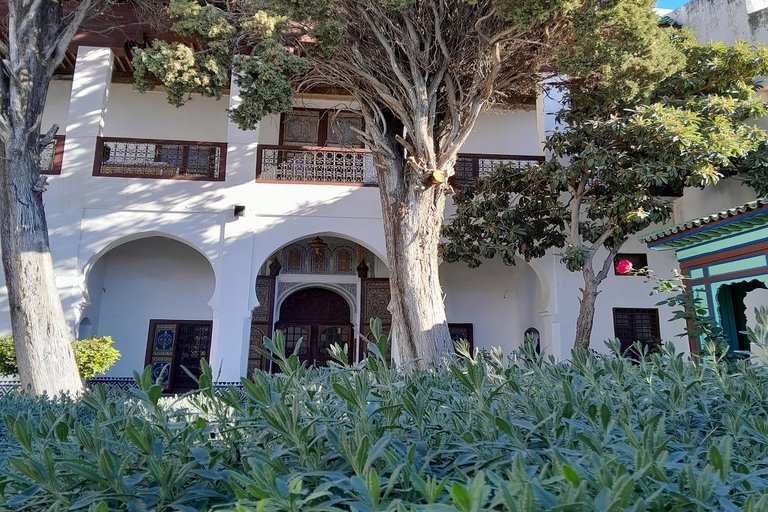
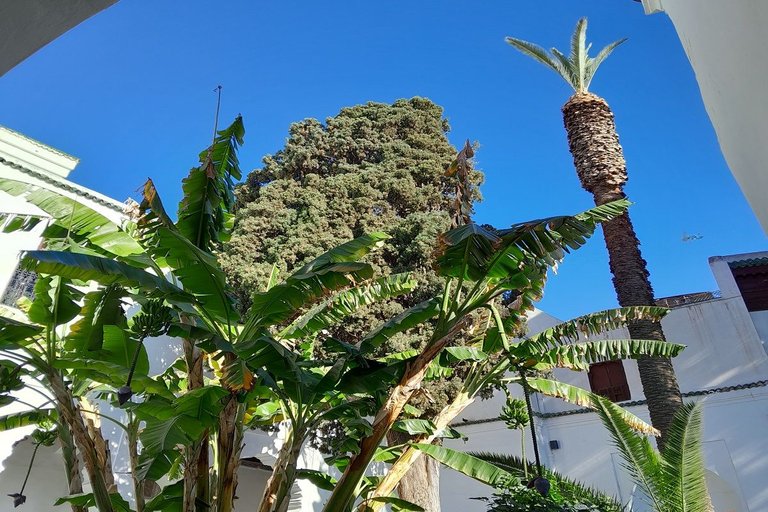
Perhaps one day you will find yourself in the imperial city of Meknes, and I can only recommend that you visit this museum! I'm sure you won't regret your visit!
Thank you for taking the time to read this post! I can't wait to share my next visits with you, maybe they'll be other places to discover in Rabat as I'm planning to travel there this week. In the meantime, don't hesitate to leave me your impressions in the comments. See you soon!

Photos taken by my own phone (Samsung Galaxy A04s).
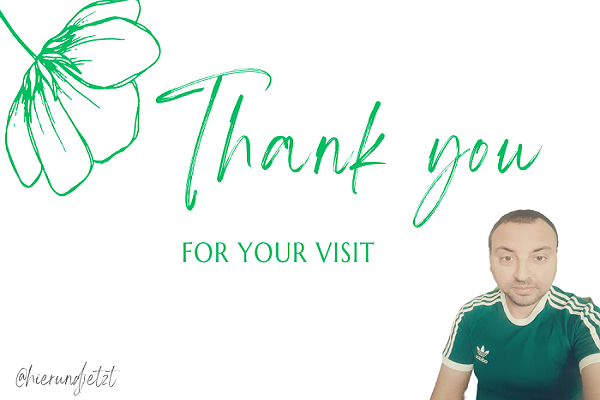
You can check out this post and your own profile on the map. Be part of the Worldmappin Community and join our Discord Channel to get in touch with other travelers, ask questions or just be updated on our latest features.
Congratulations, your post has been added to the TravelFeed Map! 🎉🥳🌴
Did you know you have your own profile map?
And every post has their own map too!
Want to have your post on the map too?
- Go to TravelFeed Map
- Click the create pin button
- Drag the marker to where your post should be. Zoom in if needed or use the search bar (top right).
- Copy and paste the generated code in your post (any Hive frontend)
- Or login with Hive Keychain or Hivesigner and click "create post" to post to Hive directly from TravelFeed
- Congrats, your post is now on the map!
PS: You can import your previous Pinmapple posts to the TravelFeed map.Opt Out
Congratulations @hierundjetzt! You received the biggest smile and some love from TravelFeed! Keep up the amazing blog. 😍 Your post was also chosen as top pick of the day and is now featured on the TravelFeed front page.
Thanks for using TravelFeed!
@for91days (TravelFeed team)
PS: Did you know that we have our own Hive frontend at TravelFeed.com? For your next travel post, log in to TravelFeed with Hive Keychain or Hivesigner and take advantage of our exclusive features for travel bloggers.
Hiya, @ybanezkim26 here, just swinging by to let you know that this post made it into our Honorable Mentions in Travel Digest #2438.
Your post has been manually curated by the @worldmappin team. If you like what we're doing, please drop by to check out all the rest of today's great posts and consider supporting other authors like yourself and us so we can keep the project going!
Become part of our travel community: